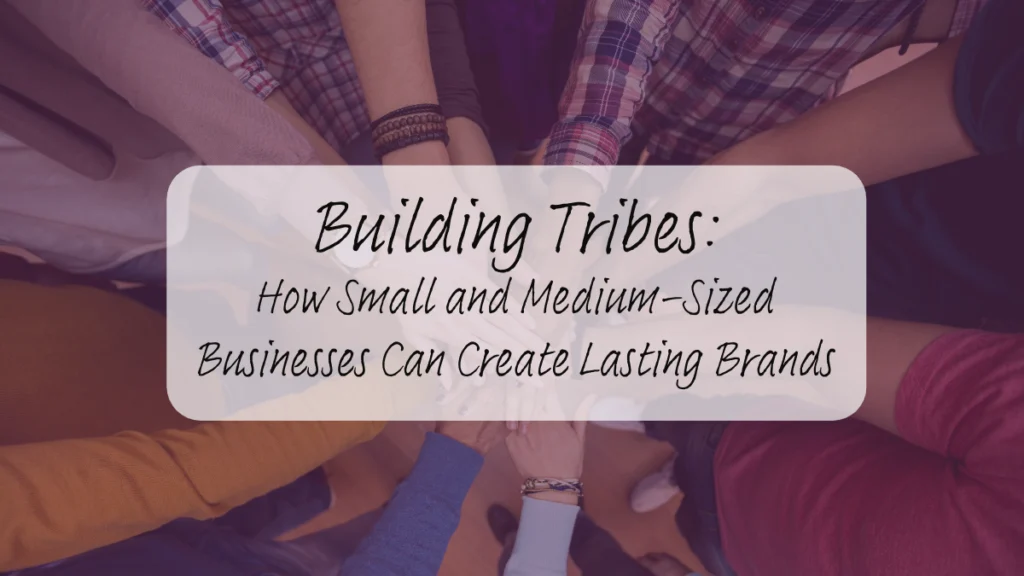In a world where branding is evolving into something akin to tribalism, the story of how McDonald’s reinvigorated its brand through the power of cultural icons serves as a compelling case study. However, for many small and medium-sized businesses, the idea of replicating such strategies might seem like a lot. After all, not every brand has the budget or the mass appeal of a fast-food giant. But fear not, because in the world of branding, there’s room for everyone, including the “less-sexy” and smaller brands.
The Power of the Narrative
Your brand isn’t just a logo or a product; it’s a story waiting to be told. Every business, from the neighborhood bakery to the software startup, has a unique narrative. It could be the story of your family’s generations-long dedication to quality, the local bookstore’s commitment to fostering a love of reading, or the passion that fuels your tech innovation.
Begin by crafting your brand’s core values, mission, and vision. Weave these elements into your brand’s narrative. Share your journey, the challenges you’ve conquered, and the victories you’ve celebrated. Authenticity is the linchpin here – people relate to real stories.
Know Your Audience Inside and Out
Understanding your target audience is paramount. Your audience comprises not just customers, but employees, partners, and industry peers as well. Dive deep into their needs, preferences, and pain points. Don’t just think about them in terms of their professional life. It’s important to consider how and where they spend their free time, what their belief and value systems are like, what type of music they listen to, etc. Use this information to build out personas that represent the audiences that represent your tribe. Knowing your audience inside out helps tailor your offerings and service delivery to meet their specific needs and desires.
Craft an Exceptional Experience
Your brand isn’t just about what you offer; it’s about how you make people feel and how your product or service adds value to their lives. Regardless of your industry, the experience you provide is your trump card and oftentimes is what serves as your primary differentiator.
For instance, a cozy cafe isn’t just about coffee; it’s about offering a comforting refuge where people can unwind and recharge. Starbucks, for example, is well known for its sensory marketing. Their brand is not defined just by the coffee that they offer, but by the sights, sounds, and smells that make you experience their brand holistically.
Engage, Engage, and when you’re done, Engage Again
Building a strong brand and culture requires ongoing engagement. In today’s digital age, social media and online communities are your allies. Use these platforms to connect with your audience, share your brand’s story, and gather feedback. Respond to comments as if you’re chatting with a friend, encourage user-generated content, and host virtual events or webinars.
Regardless of your industry, engaging your audience and involving them in your brand’s journey creates a sense of community that keeps people coming back.
Consistency is King
Building a brand takes time and unwavering consistency. Ensure that your messaging, values, and customer experience remain steadfast. It’s important to establish brand standards that include(among other things) your tone of voice. That same voice needs to show up in every brand interaction you have with your customers, from emails to social media posts.
Small and medium-sized businesses have the advantage of being closer to their customers, which allows for a more personal touch in every interaction, so don’t let that be a missed opportunity.
In the ever-evolving world of marketing, the size of your business matters far less than the strength of your brand and culture. Small and medium-sized businesses, regardless of industry, can create lasting identities that resonate with their audiences. By mastering the art of storytelling, deeply understanding your audience, creating remarkable experiences, and staying engaged and consistent, you can build a brand and culture that endures.
So, whether you’re in non-profit, technology, manufacturing, or any other sector, remember that crafting a brand and culture people want to be part of is not only achievable but also essential for long-term success. Embrace your uniqueness, tell your story, and watch your brand and culture flourish.

